The art of drawing involves so many factors to consider: line quality, shading and lighting, anatomy, perspective, colors… It can be overwhelming!
To make rapid and effective progress in drawing, it is essential to focus on one thing at a time and bring order to our creative process. We will explore 5 tips that will help you maximize your progress by optimizing your drawing sessions.
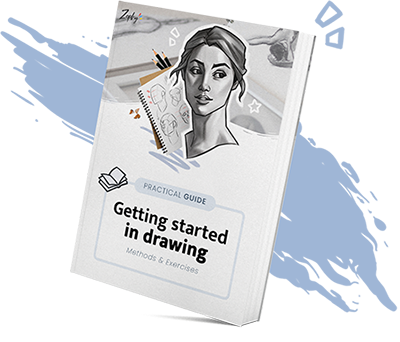
Discover our free guide to start drawing easily. You will learn practical methods and exercises to put into practice right away.
1 - Focusing on one thing at a time
We are often accustomed to being multitasking and doing many things at once to make the most of our time. It has almost become automatic. We draw while watching a series, chatting with a friend, or listening to a lecture…
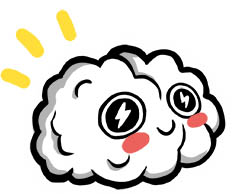
While it may give us the feeling of being productive, in reality, we overload ourselves with too much information. We may be able to accomplish multiple tasks, but we won’t be fully focused on any one of them.
It is actually impossible for the brain to concentrate on multiple things at once. In reality, we switch from one task to another, constantly alternating. It’s a constant back-and-forth that tires us out.
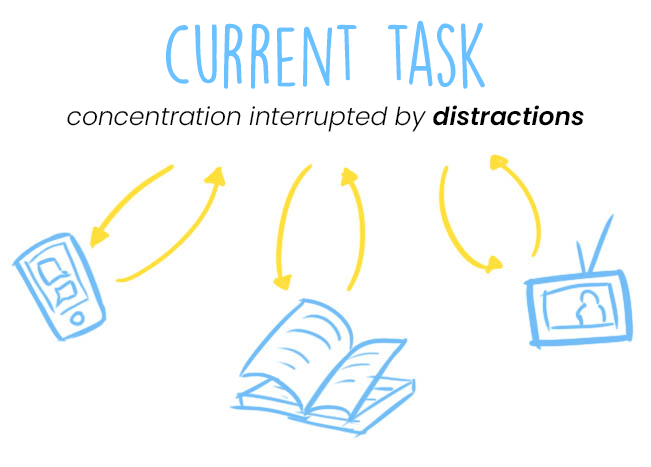
We may even end up suffering from an attention and concentration problem because we no longer train our brain to focus on one thing, to be fully present in the moment.
Cutting off all distractions is a real boost if you want to be completely efficient in what you do. It may seem easy, but in reality, it’s not so simple to stay focused on a specific task without getting distracted. It’s actually the principle of meditation!
Short-term memory and long-term memory
When learning to draw quickly, it is necessary to understand that we have two types of memory:
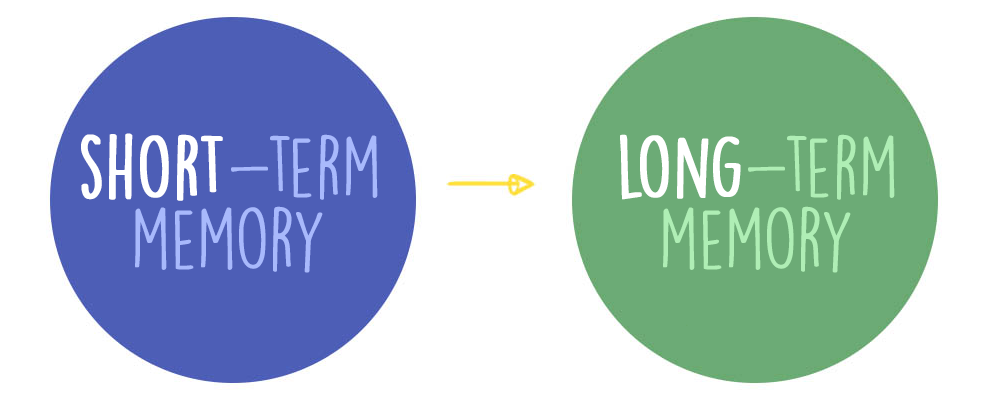
When we are scattered and not fully focused, all the information falls into short-term memory. What we want is for everything we learn related to drawing to fall into long-term memory.
The idea is not to waste time and make the most of each session. Cutting off all distractions and being fully present in your learning moment allows you to store information in long-term memory.
If in each of your drawing sessions you manage to be fully concentrated on mastering your stroke, imagine the results you could achieve in a few weeks.

2 - Achieve productive sessions with the Pomodoro Technique
The desire to learn how to draw quickly sometimes leads us to do long drawing sessions without breaks. We exhaust ourselves, lose our concentration, and end up spacing out our drawing sessions.
We have all spent hours drawing in one go, only to take a long break afterwards. And when it comes to improving in drawing, irregularity is the worst thing.
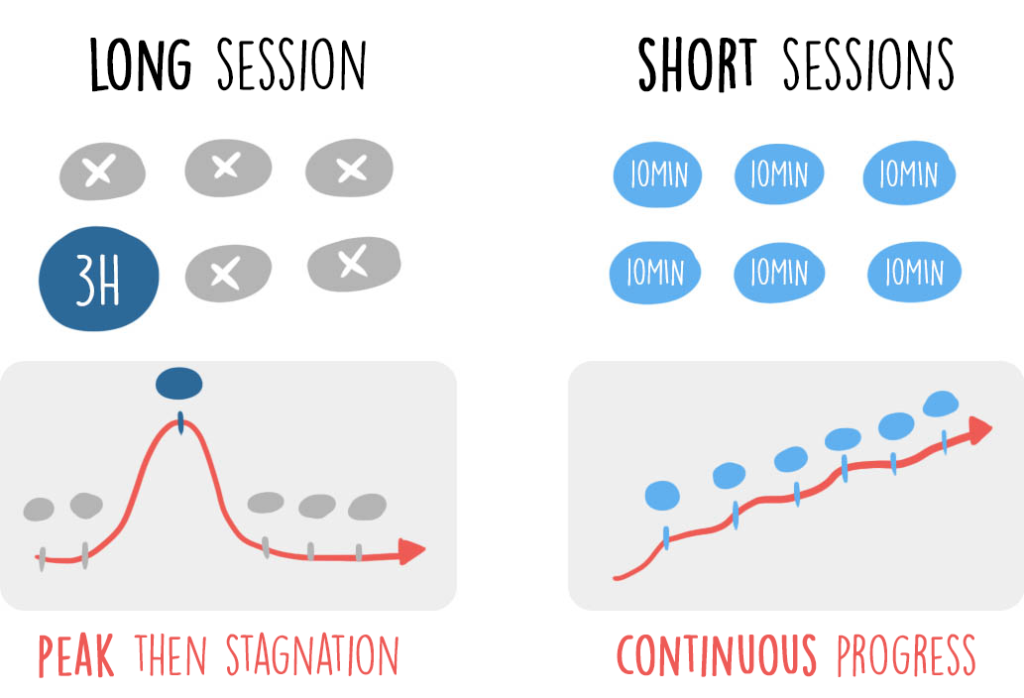
Our ability to concentrate is about 30 minutes
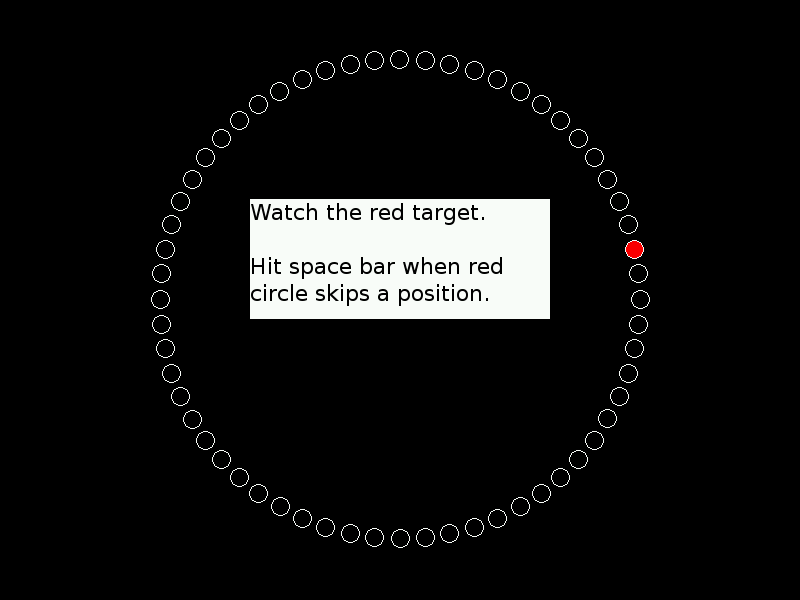
During World War II, Norman Mackworth developed a vigilance test to assess the concentration of radar operators in the British Air Force. They had to track a marker on the screen and follow instructions.
This device led to a fundamental discovery about a person’s concentration and attention over an extended period. Vigilance would significantly decline after 30 minutes.
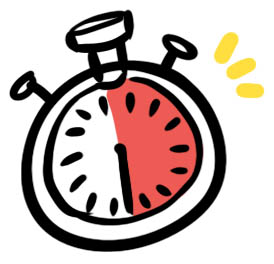
This clearly indicates that our concentration capacity is condensed in the first half-hour. After that, we lose interest, make mistakes, and simply become less effective.
Alternate between periods of work and periods of rest.
The Pomodoro technique is excellent for maximizing your time, having better drawing sessions, and, most importantly, not overworking yourself unnecessarily. The idea is to be highly efficient in a short amount of time, rather than the other way around.
And for that, this technique involves timing our work sessions and taking short breaks at regular intervals.
📌 How it works
1
Set a timer for 25 minutes
As we have seen, our attention significantly decreases after 30 minutes. The idea is therefore to stay below the half-hour mark in order to allocate ourselves a break afterwards to regain our focus.
2
Take a 5-minute break
After drawing for 25 minutes, it’s time to give ourselves a short break to reset. This is particularly beneficial in drawing, as it allows us to refresh our perspective on our sketch as well.
3
Repeat this process 3 more times
The idea is to complete four full cycles (with each cycle consisting of 25 minutes of drawing and 5 minutes of break), until reaching a total of two hours
4
Take a long break of 15 to 25 minutes
After completing the four cycles, take a long break of 15 to 25 minutes and give yourself a change of scenery. Enjoy a nice cup of tea, watch a short episode of a series, or watch videos about drawing. The goal is to truly unwind and decompress from those two hours of work.
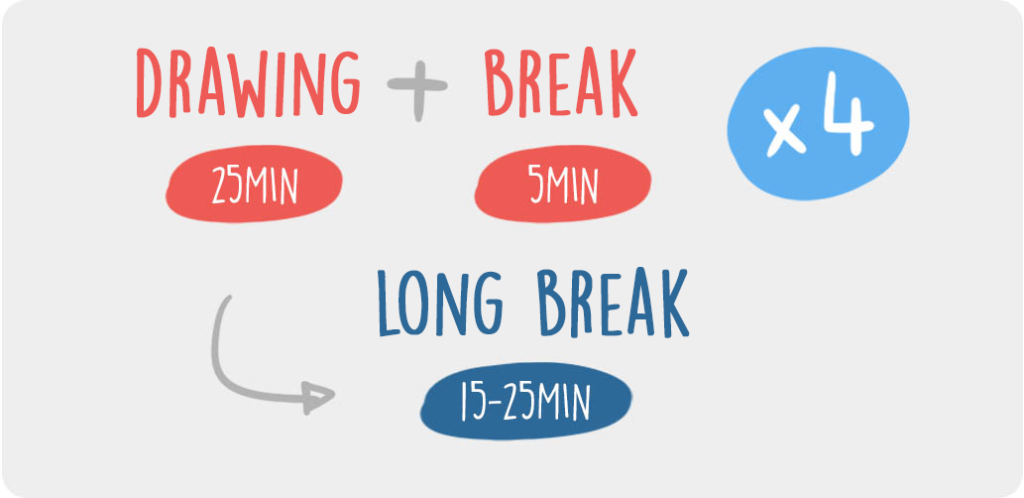
You can apply this method to absolutely anything and repeat it as many times as needed. By developing the habit of alternating between breaks and focused work, you enhance both your productivity and well-being.
It’s a genuine mental exercise that brings benefits in every aspect and creates a virtuous cycle, as you reduce stress while increasing your capabilities.
3 - Study to truly understand your subject
Now that we have discussed our organization and work methods, it is crucial to know what to draw specifically.
Drawing blindly runs the risk of practicing without much purpose. We might end up copying drawings we like or photos that inspire us, but that alone won’t lead to rapid progress.
Practicing without an action plan is not effective. It is essential to take the time to delve into the fundamentals of drawing.
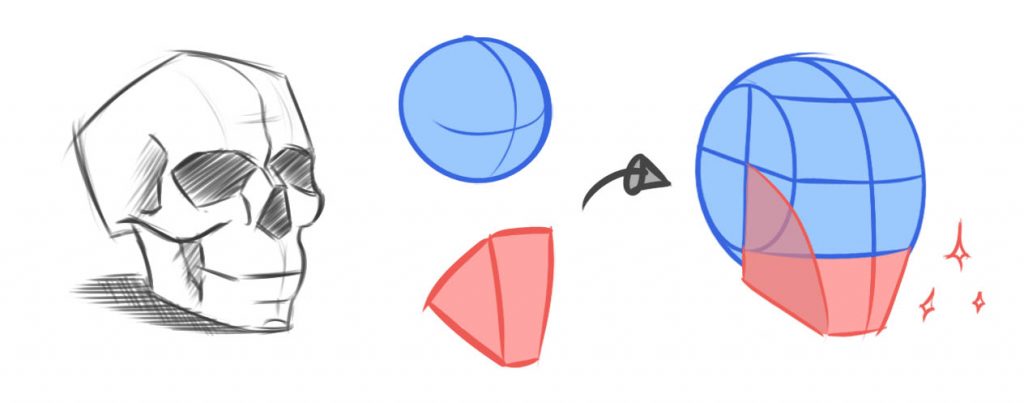
The process to adopt
Studying your subject is truly a huge advantage for drawing it better. The idea is to resist the temptation to simply copy what we see. That won’t teach us how to draw. At best, we’ll end up with a drawing that looks similar, but we won’t have learned anything at all.
📌 Comment faire ?
1
Study your subject
Let’s take the example of an octopus. As usual, we will gather some photo references to study it better. Before jumping into drawing and copying the outlines, we will take the time to observe and analyze.
➡️ This is the fun part, where you can unleash your creativity with quick study sketches. Truly seek to understand what makes up this animal.
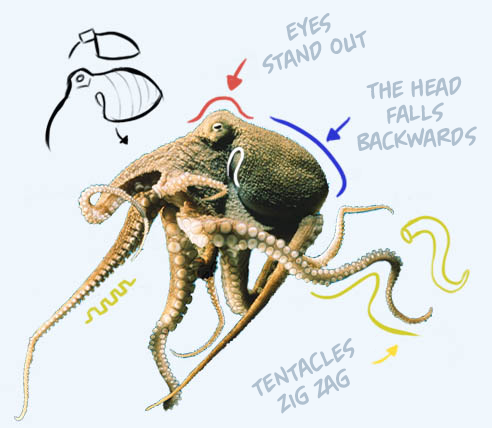
2
Deconstruction
Now we can proceed to draw the elements that make up our octopus using simple shapes. For example, the head resembles an elongated sphere, and the tentacles are like cylinders that taper and twist.
➡️ By deconstructing what we see into simple shapes, it will be much easier to draw.
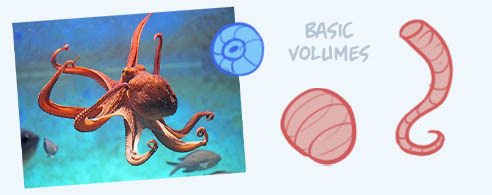
3
Construction
Now that our volumes are defined, we can assemble them together like building blocks. We will take a reference and reproduce it, but this time, instead of drawing the outlines, we will start from our simplified shapes.
➡️ By thinking in basic forms (cylinder, sphere, etc.), we can better convey the sense of volume in our drawing.

This method is highly effective because it allows us to take the time to observe, analyze, and think in 3D. It maximizes our drawing process as we gain a better understanding of our subject.
Consequently, the next time we approach drawing it, we will do so with much greater ease. Gradually, drawing from memory will become even more intuitive.

4 - Analyze your own mistakes and embrace your failures
We all have moments where we create drawings that we consider as failures. However, it’s important to know that this is actually a great opportunity for growth. Making mistakes in our drawings is a perfect chance to progress.
Each mistake invites us to reflect on how to avoid repeating it. It’s a disguised lesson. When you make mistakes, take a step back from your drawing and try to have an objective perspective on it.
While examining one element at a time, ask yourself: What is not working? Is it the quality of the lines? The perspective? The shadows? The volume?
By taking the time to analyze your drawing, you will be able to find the keys that will help you progress.
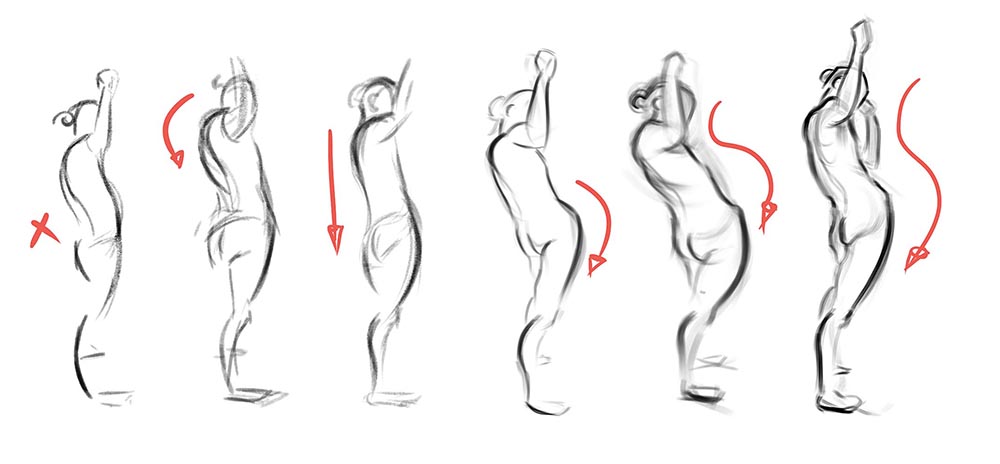
The practice sketchbook
Take a sketchbook dedicated to your learning. This sketchbook will be filled with failed drawings, and that’s completely okay. Mistreat it, draw in all directions, cross out pages.
The idea is to free yourself from the perfectionism that sometimes prevents you from making mistakes or even seeing them. By having a ‘free’ sketchbook, you will be able to make sketches without pressure.
Next to each sketch, specifically note what is not right or could be improved. Also, note the good points and progress because there are some in every drawing!
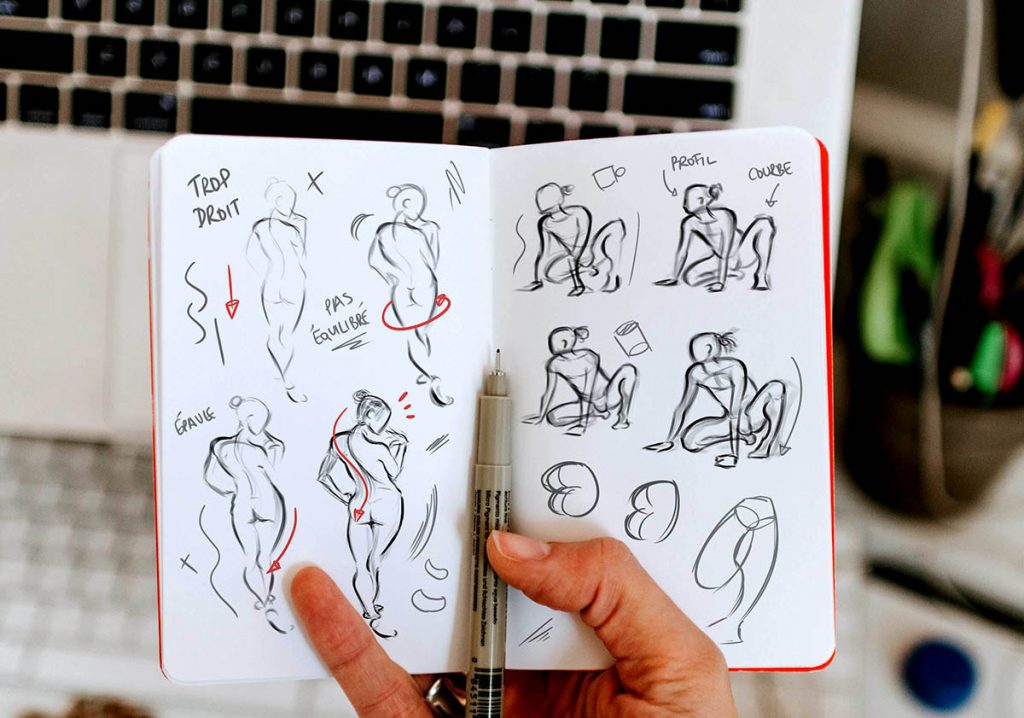
Spiral-bound A5 sketchbooks are ideal for warming up and practicing without the pressure of a “beautiful” sketchbook.
Thanks to this, you will maximize each drawing by learning a little more from your mistakes every time. You will replace frustration with motivation.
And when we enter a virtuous circle, our progress multiplies, and we learn to draw much faster.
5 - Smartly draw inspiration to save time
Lastly, the final tip is to draw inspiration intelligently from the work of others to develop our own creativity. The goal is to focus our attention on areas of improvement rather than insignificant details.
Inspiration is a huge time-saver because we don’t have to reinvent the wheel. Nothing is created purely from imagination; everything already exists. We just need to draw from existing things, transform them, and create new drawings.
Let’s say you want to draw a character. Instead of copying a character concept created by an artist, we will challenge ourselves to create it from scratch to make it unique.
📌 How do we proceed?
1
Designing our drawing

First, we will list what we want to see in our drawing. Taking the example of the character, we will list their characteristics: a woman, tall, in armor with a sword. A kind of knightess.
2
Compile a reference folder

Next, we will build a reference library with poses that seem interesting for our character, models of armor, swords, faces, etc.
3
Analyze drawings from other artists

Now, find drawings that have the exact style you are aiming for. The idea is to analyze the artist’s strokes and try to replicate them in your own drawing.
4
Constructing your drawing

Now that you have your references and inspirations, you can create your character from scratch by first focusing on the construction.
The goal of this process is to challenge yourself to step out of your comfort zone, to no longer copy, but to create something unique using external elements.
By using multiple references and inspirations from different artists (rather than just one), you develop new ideas and it pushes you to create new concepts. It’s excellent for learning to draw.
You also save a lot of time! Instead of creating a pose from imagination, take a photo of yourself or find references for the pose you have in mind. This way, you will have a better understanding of anatomy, and your progress will be even more evident.
To summarize
There are several factors that contribute to progress in drawing, and it only takes small tricks to truly boost your results.
The most important thing is to focus on one thing at a time, take your time, and not rush into the details right away.
Organization and creative processes are key factors that are often underestimated in learning to draw. However, thanks to them, you will be able to maintain a consistent practice and learn much faster than anyone else.
Remember that you don’t have to be the best, but simply give your best effort every day. Progress will naturally follow. ✍️
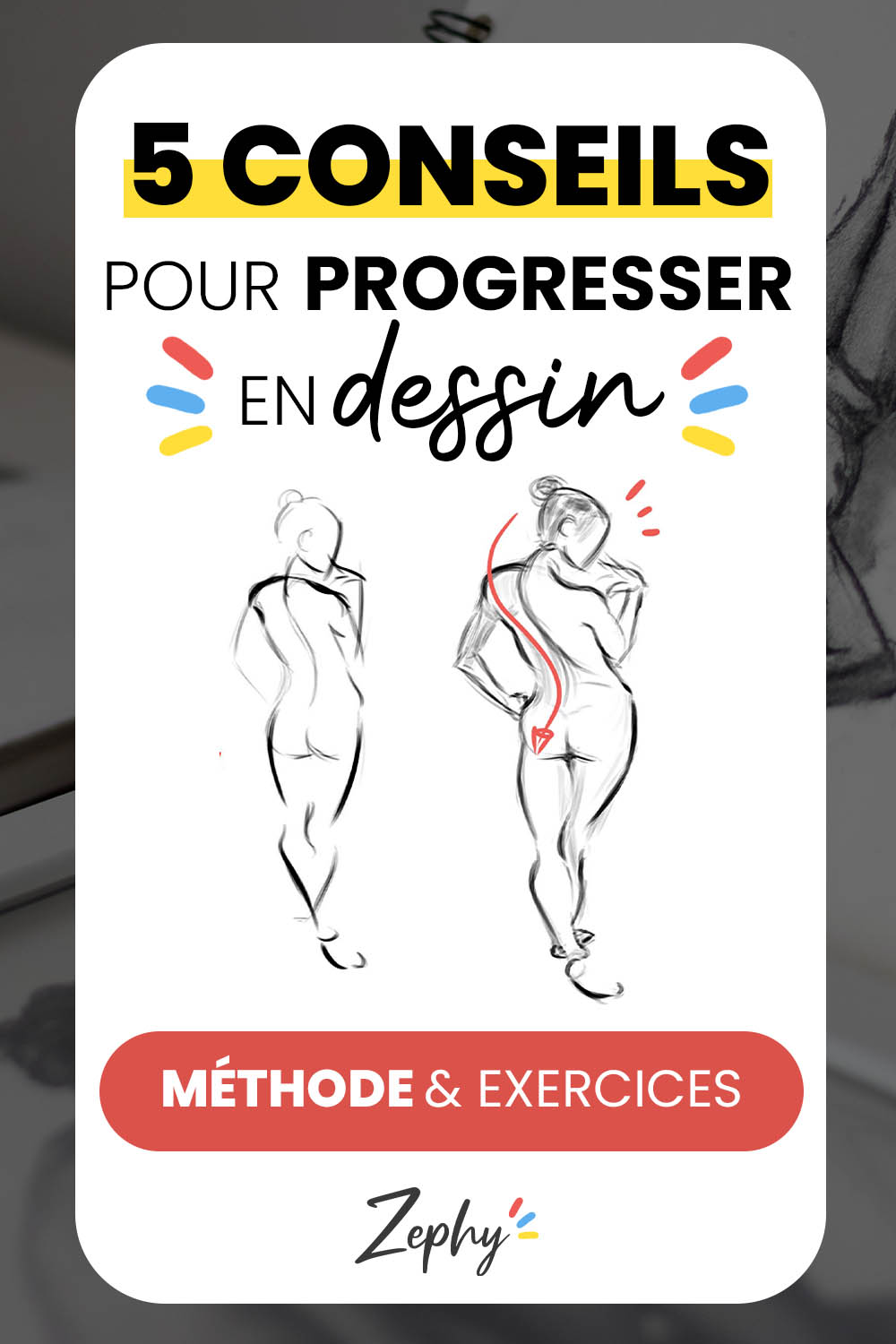

Save the article for future reference!
By hovering over the image, you can directly save the article to your Pinterest account. This also allows us to share the article with a wider audience of aspiring artists!
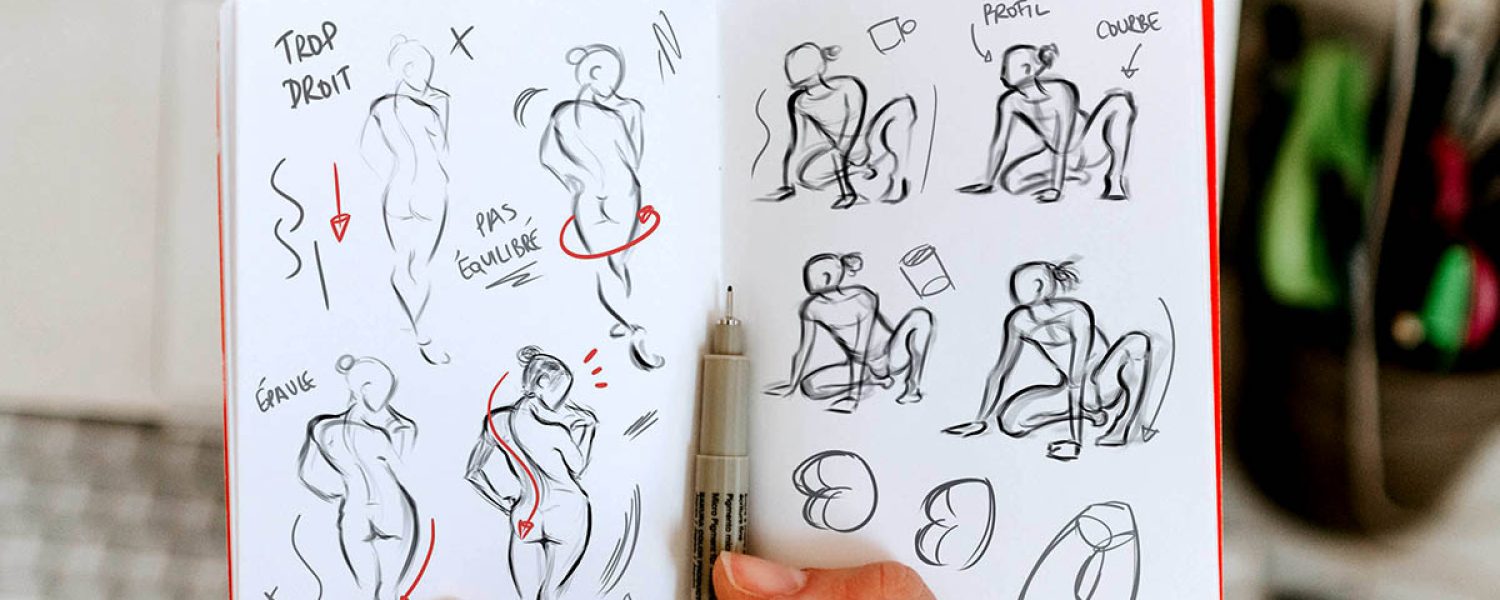
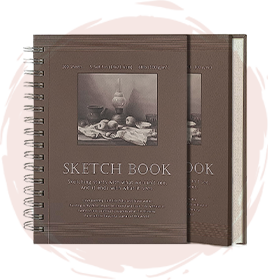



15 comments
Hi,
Thank you for the warm introduction!
I’ll soon have the right conditions to start…
And I’ll need your help!
Thank you for waiting for me 🙂
Hello Alain,
Glad to hear that it’s motivating you and getting you ready to start your learning journey.
We’ll be here for you! ☺️
That’s great! I was stuck and couldn’t make progress, but I’ll start today.
Thanks for these awesome tips!
With great pleasure, François! I’m delighted that it can be helpful! ✨
Wow, you put on paper everything I was looking for, what was missing for me. Now that it’s clearer in my mind, thanks to you, I know that I will take giant steps. Thank you so much! I wish you all the success you deserve and keep up this blog that I find so inspiring. Cheers from Québec!
Oh, thank you so much for this incredibly sweet feedback! I’m delighted to see that everything is clearer for you and that you have everything you need to progress as you wish.
Great, now I feel reassured and I think I can start. Thank you!
It’s a pleasure! ☺️
Yep, thank you very much, that’s absolutely right, thanks for sharing. Currently, I’m doing long sessions of 3 to 6 hours, but then I have little energy left for creating, so I do some sports and then come back to drawing. The trick of 4 times 25 minutes is just brilliant, thank you. I’ve made tremendous progress. Good luck to everyone for leveling up
Thank you, Zephy, for your generosity and advice. For me too, the trick of 4 times 25 minutes is simply brilliant, to share with others around us..
With great pleasure, Jean-Claude, I’m delighted that these little tips can help. Sometimes, it’s the small things that really make progress.
Happy drawing to you! ☀️
Thank you for helping us progress in our drawings
With pleasure!
Hello,
Thank you for these valuable tips.
I’ve been drawing for a while, and yet I wasn’t satisfied with my results.
And now I know how to improve 🙂
Hello Esteban,
Truly delighted that the tips can be helpful! If it can provide some ideas for improvement, that’s really fantastic. Happy drawing!